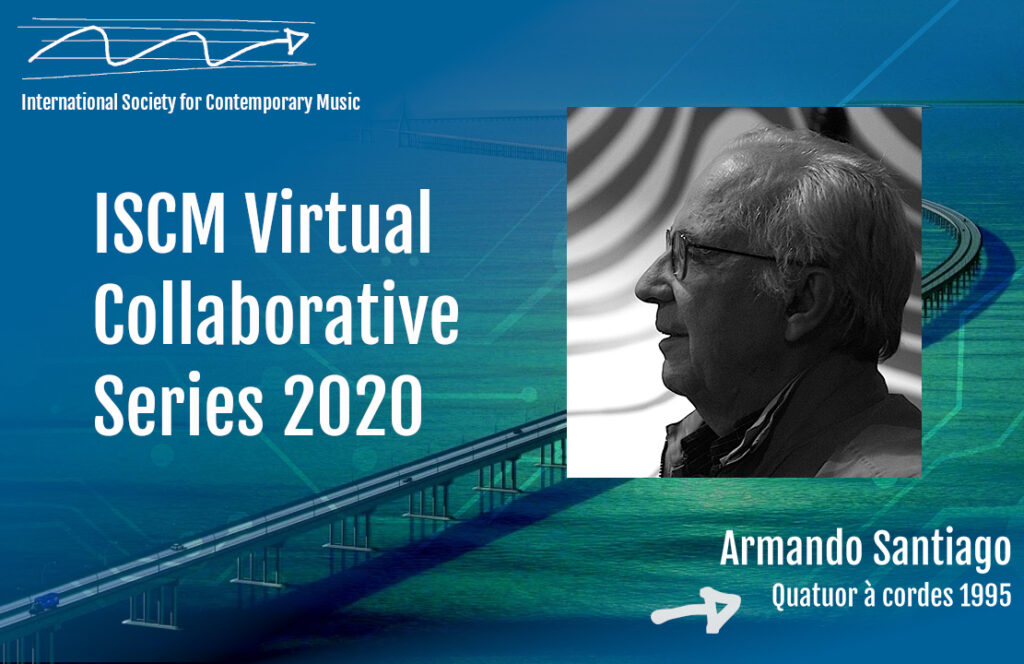Armando Santiago: Quatuor à cordes 1995

(Submitted by ISCM – PORTUGUESE SECTION)
Armando Santiago, composer, conductor and professor, was born in Lisbon in 1932, and moved to Canada in 1972. His catalogue includes orchestral, chamber music, and electroacoustic works. In the evolution of his activity, Armando Santiago has always expressed himself by means of diverse technical and aesthetic means. In his case, composition has emerged as a manner of responding to a personal need, looking for the fulfilment of each attitude’s detail and adequacy. In the 1960s, Armando Santiago studied musique concrète with Pierre Schaeffer in Paris, having also worked with Boris Porena and Goffredo Petrassi in Rome, as well as with Franco Donatoni in Siena. In 1978 he was nominated director of the Conservatoire of Music in Québec, a post which he maintained until 1985 and joined with the function of the Conservatoire Symphony Orchestra’s conductor. Until his retirement in 1997, the composer also exercised his pedagogical activity as professor of the Conservatoire’s Composition class. Armando Santiago is member of the SOCAN and the Canadian League of Composers.
Quatuor à cordes 1995, says Santiago, “is one of the most representative works within my music thought. Quatuor à cordes 1995 intends to be the result of only one itinerary of intentions, although its base material has been obtained from four different and necessarily complementary tempi: 1) a set of “incisive” and discursively predominant curves, constituted of fast, overlapping values; 2) a “trace” of involving nature, an organic material with predominating curves, acting as a moving cluster; 3) a superior, inferior or mixed pedal-material, likewise with wrapping nature and presented in overlaps; 4) a vertical, simple and articulated, dispersed “attack”. When it comes to its structure, the piece takes the shape of an “ostinato” (an exalted “romanticism”?), where the different, generating micro-cells are subject to the most varied forms of “readings”, multiplying their profiles. A long section, preceding a developed “coda”, presents a conical swirl, oscillating and involving the four instruments in a suffocating atmosphere. On the other hand, the auto stimulation of the different inter-complementary gestures, re-exposed and renewed in communicating vessels, depends on the search for timbres, being oriented in function of depth zones within the sonic fabric. All this editorial set intends to establish a ceaseless, psycho-emotional and tormented situation. The score was edited through software which I conceived exclusively in order to be applied to the Quatuor à cordes. It was destined, above all, to emphasise the specific graphical aspect of the proportional, metric and mixed notations.” (The following comment was extracted from a June 2020 MIC.PT interview with Armando Santiago (June, 2020); to read the entire interview, click here.)
Performed by the Matosinhos String Quartet
Vítor Vieira and Juan Maggiorani (violins), Jorge Alves (viola), Marco Pereira (cello)
Recorded at the O’culto da Ajuda in Lisbon
October 7, 2020

ISCM
